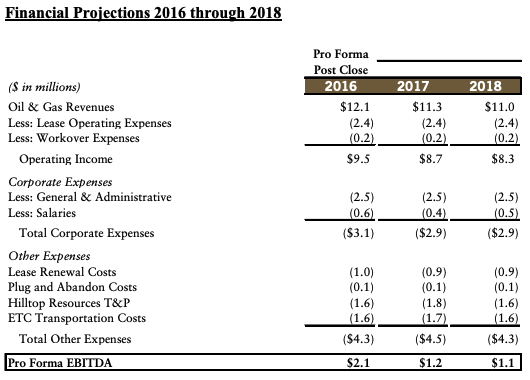March 5, 2019
Three things immediately occurred to us when we saw the news that Diesel USA Inc. filed for bankruptcy in the District of Delaware:
That makes perfect sense — Jersey Shore went off the air a long time ago;
This is “The Mattress Firm Effect” in action — a retailer using a quick trip in bankruptcy to, on an expedited basis, flush out some burdensome leases and otherwise leave parties in interest unimpaired; and
More surprising than the company filing for bankruptcy is the law firm filing it for bankruptcy. Arent Fox LLP, while a fine firm for sure, isn’t exactly known for its debtor-side chops. Just saying.
The numbers around this one are…well…interesting. The company’s brick-and-mortar retail operations consist of 28 retail store locations in 11 states, comprised of 17 full-price retail stores and 11 factory outlet stores. Net sales were:
In terms of percentages:
We see a couple of significant problems here.
Despite the superlatives that the company’s CRO generously uses to describe the company, i.e., “cutting-edge,” and “cultural icon,” the numbers reflect a BRAND — let alone the business — in significant trouble. Sure, net sales are down generally, but the distribution has gotten wildly askew. The numbers reflect a bare reality: Diesel simply isn't a brand people will pay full price for anymore. This couldn’t be more stark. And that’s a big problem when the company is (or was) party to expensive height-of-the-real-estate-market leases in prime locations like Manhattan’s Fifth Avenue. Diesel, quite simply, isn’t “Fifth Avenue,” let alone “Madison Avenue.”* We’re not convinced the company is being realistic when it says that it has “retained a loyal customer base.” The numbers plainly say otherwise. Moreover, in an age where digital sales are increasingly more important, the business has become MORE dependent on brick-and-mortar as opposed to its wholesale and e-commerce channels.**
But don’t take our word for it. Here’s the company’s CRO:
…in 2015 prior management implemented a strategic initiative that was focused on repositioning Diesel stores and products in premium locations and with premium customers so as to place them side-by-side with other premium fashion brands across the retail, online, and wholesale platforms. Unfortunately, since its implementation, the Debtor’s net sales have significantly decreased while its losses have significantly increased.
The market has spoken: Diesel is, according to the market, simply not “premium.”
And by “market” we also mean wholesalers. The company opted to stop distributing its products to wholesale partners “that were deemed not to fit the premium image.” Now, we can only imagine that included discount retailers. Basically, SOME OF THE RETAILERS WHO HAVE PERFORMED THE BEST OVER THE LAST SEVERAL YEARS. But wait: it gets even worse: the wholesale customers the company DID retain pursued voluminous “chargebacks.” Per the company:
As is common in the retail industry, the Debtor provides certain customers with allowances for markdowns, returns, damages, discounts, and cooperative marketing programs (collectively, the “Chargebacks”). If the Debtor’s customers fail to sell the Debtor’s products, they generally have the right to return the goods at cost or issue Chargebacks, which are netted against the Debtor’s accounts receivable. Due to mounting Chargebacks from wholesale customers, the Debtor was forced to significantly reduce its wholesale activities in recent years.
Basically, nobody is buying this sh*t. Not in stores. Not in wholesale.
And, yet, the company holds premium leases:
The primary means of implementing the 2015 strategy was to reposition the Debtor’s full-price retail and outlet stores to “premium”, high-profile, and high-visibility locations, which was executed by opening certain new stores and relocating others to “premium” locations while closing others deemed not to fit the new strategic positioning model. The result was, despite the losses suffered in connection with the Fifth Avenue store, management’s negotiation and entry into several expensive, long-term leases for certain of the Debtor’s retail locations, such as the Debtor’s “Flagship” store on Madison Avenue, which do not expire by their terms until 2024-2026. Of course, it was then (and remains today) an inopportune time to make long-term commitments to costly retail leases and the significantly increased lease expenses have not been offset by increased sales, which, in fact, have dropped precipitously.
…numerous of the Debtor’s stores are producing heavy losses. The Debtor’s unprofitable stores combined to produce negative EBITDA of approximately $10.7 million in 2018, nearly all of which flowed from full-price retail stores. The Debtor’s profitable stores are not enough to off-set the losses, as the 17 fullprice stores combined to produce negative EBITDA of approximately $8.7 million in 2018.
Now, the company does indicate that certain (seemingly outlet) stores remain profitable, as do the wholesale and e-commerce operations.*** So, there’s that. New management is in place and their plan includes (a) using the BK to negotiate with landlords, shutter some locations, shutter and relocate others, opening new smaller stores and refit existing locations; (b) deploying influencer marketing generally and aiming more efforts towards females (and hoping and praying that athleisure — a term we didn’t see ONCE in the entire first day declaration — doesn’t continue to hold sway and steer people away from jeans, generally);**** (c) growing e-commerce; and (d) revitalizing the wholesale business with key selective wholesale partners. This plan is meant to take hold in the next three years and “will require significant capital investments.” (PETITION Note: cue the chapter 22 preparation). The company intends to effectuate its new business plan via a plan of reorganization pursuant to which it will reject certain executory contracts. All in, the company hopes to be confirmed in roughly 5 weeks. Aggressive! But, like Mattress Firm, trade creditors are “current” and there’s no debt otherwise, so the schedule isn’t entirely out of the realm of possibility.
But this is the part that REALLY gets us. If you’ve been reading PETITION long enough — particularly our “We Have a Feasibility Problem” series — you know by now that you ought to be AWFULLY SKEPTICAL of management team’s rosy projections. Per the company:
The Debtor’s projections indicate that the Reorganization Business Plan will return the Debtor to stand-alone profitability by 2021 assuming successful store closures through this Chapter 11 Case, thereby ensuring its ability to continue operating as a going-concern, saving over 300 jobs, and creating new ones through the new store openings.
Generally, we’ll take the under. Though, we have to say: at least they’re not audaciously projecting a miraculous profit in 2019.
How will they achieve all of these lofty goals? The company’s foreign parent will invest $36mm over the three-year period of the business plan because…well…why the hell not? Everyone loves a Hail Mary.











